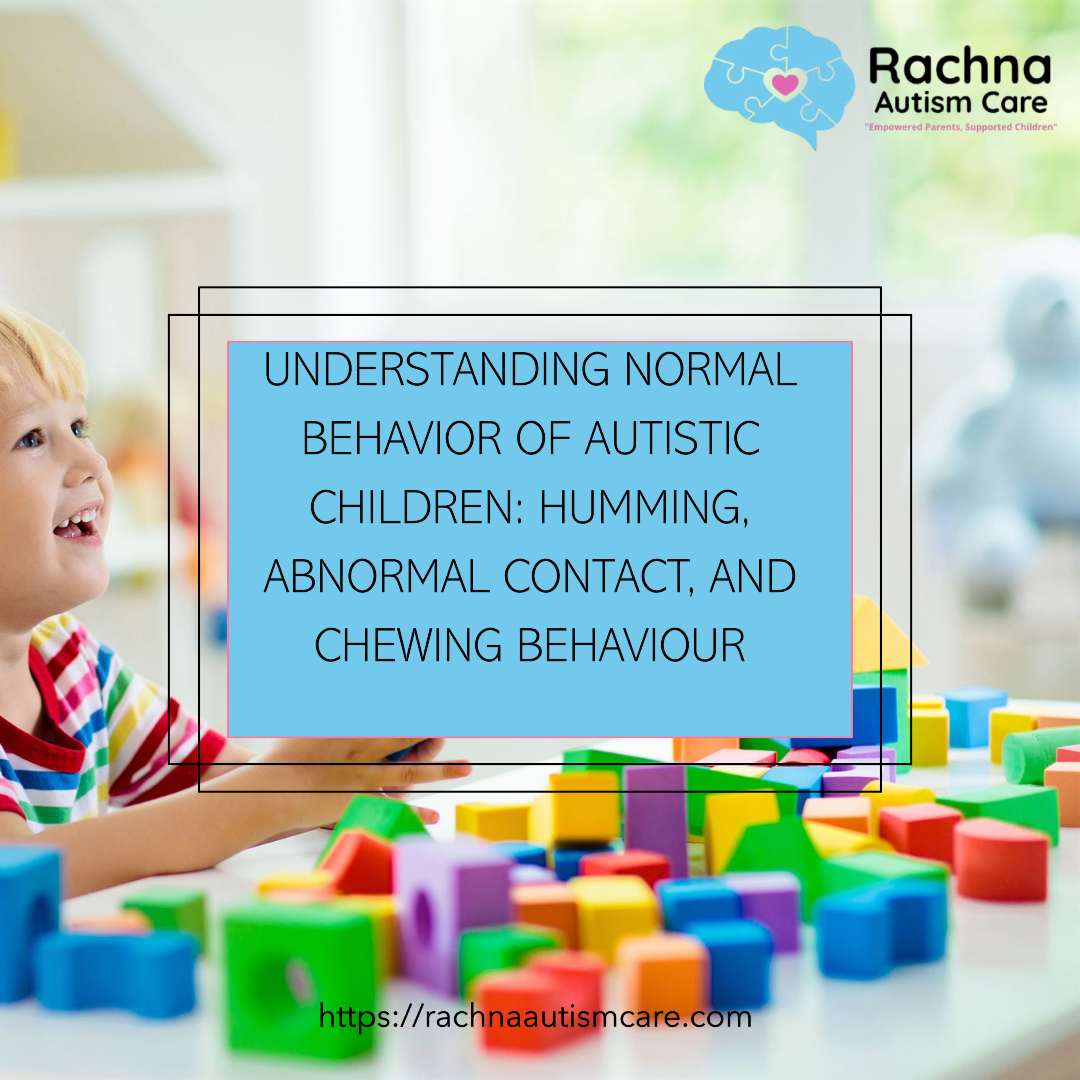Autistic Insights: The Humming, Eye contact, and Chewing
Autism Spectrum Disorder, in short ASD is a complex neurodevelopmental condition that presents itself in various ways to different people. Among many behaviors associated with the diagnosis of autism are three common ones that look very puzzling to the parents and their caregivers: humming, problems associated with eye contact, and unique chewing patterns. In, we are going to look deeper into these behaviors and give insights on what they may mean and ways through which this can be helpful in developing supportive skills for autistic children .
Humming in Autistic Children
Humming is probably one of the most common autistic characteristics of a child, though it would seem unusual within the neurotypical sphere. However, humming serves several very important purposes.
Why Autistic Children Hum
Humming will assist an autistic child in controlling overstimulation or anxiety.
If the environment is understimulating, humming provides just what is needed from a sensory stimulation perspective.
Humming is the means of communication for some specific autistic child feelings or needs.
Targeting: The humming may allow the child to focus on certain things or filter out other interfering stimuli.
Supporting a Humming Autistic Child
If you are working with an autistic child who hums, try the following:
viewing a humming autistic child as coping with stressors, not a problem behavior,offers alternative sources of auditory stimulation, such as some music or white noise machines that teach him when and where he can hum to help him integrate socially.Use humming as a means of interaction to engage with your child.
Eye Contact Issues in Autism
One common feature of autistic individuals is their failure to maintain or initiate eye contact. This behavior often gives an impression of lack of interest or disinterest. Again, this cannot be interpreted because reasons behind this behavior are too hard to understand and difficult to determine, which must be understood in the perspective of the way by which an autistic brain integrates information.
Why is Eye Contact Not Easy to Make for Autistic Children?
- Overwhelming sensory input: Too much eye contact can be overwhelming.
- Information processing: Not so much eye contact would keep the listeners able to focus on what is going on through the auditory channel.
- Social anxiety: Eye contact might be very stressful in social scenarios.
- Separate neural pathways: Maybe, the system functions differently for faces and eyes in autistic brains.
Strategies for Improvement of Eye Contact in Children with Autism
While it is essential that you respect the comfort level of an autistic child, their gaze can be softened by applying the following techniques:
In targeting less stressful conditions and utilizing known individuals,
Visual aids such as stickers placed close to the eyes, Through the use of games which encourage face to face encounter naturally like peekaboo, Any effort in the direction of eye to eye contact is all rewarded with positive reinforcement Instead, gaze could be directed to the bridge of the nose or even the forehead.
After all, forced eye contact often causes and is unpleasant for children with autism. The aim actually should be comfort in communication, not adjustment to neurotypical standards.
Chewing Behaviors in Autism
Chewing on anything but food is known as pica or mouthing. It’s one of the most common behaviors among children with autism. Though it may seem to cause troubles for parents, understanding the reason for the behavior can help efficiently handle it.
Why Do Autism Children Chew?
- Sensory seeking: Chewing may yield proprioceptive input and can even be a calming activity.
- Oral stimulation: Some autistic children may have heightened oral sensitivities.
- Anxiety reduction: Chewing will help to allow an autistic child to self soothe in specific anxious situations.
- Exploration of objects: In a sense, it is a way to examine objects and their surroundings.
Controlling Chewing Behaviors for Autism Children
To control the safe, effective chewing behaviors of the autism child, consider the following strategies
Safe, Alternative Chewables: Chewing jewelry or textured toys Implement a sensory diet through the whole day to cater to the child’s requirement Teach alternative behaviors that perform the same function as chewing Make sure the child’s oral motor is correct and solve any dental problem Positive reinforcement should be implemented to promote proper chewing habits.
Humming, Eye Contact, and Chewing in Persons with Autism
Although these behaviors appear to be unrelated, they usually stem from the same base in autism, such as:
- Differences in processing sensory information. All three of these behaviors are attempts at ways to respond to challenges in sensory processing.
- Self Regulation: Each of these behaviors has served as a method of coping with overwhelming stimuli.
- Communication: These behaviors can represent an attempt to get needs or emotions communicated without any verbal means.
- Neurological differences: These behaviors are how autistic brains process and respond to information.
Beneath these behavioral actions lies the ability of understanding different connections of such behaviors so caregivers could develop strategies related to and comprehensive.
When we meet the underlying sensory need and provide fitting alternatives, this allows autistic persons to move more comfortably in their world.
Conclusion
Chewing, lack of eye contact, and humming are some of the presenting symptoms of autism that really puzzle parents and caretakers. It is only when we decipher for what reason the functions these behaviors serve, only then can we understand the reasons that have led them to such deeds and thus tackle them with a sympathetic approach while molding an efficient strategy for supporting autistic children.
Remember that every child with autism is unique, and what may work for one will not work for another. So, work with health professionals and therapists to construct a plan that is individualized to ensure the child’s needs are met and capitalizes on the child’s strengths.
Acceptance of these behaviors then means an inclusive world where people can better concentrate on the wellbeing of autistic individuals and their beauty with dignity.




